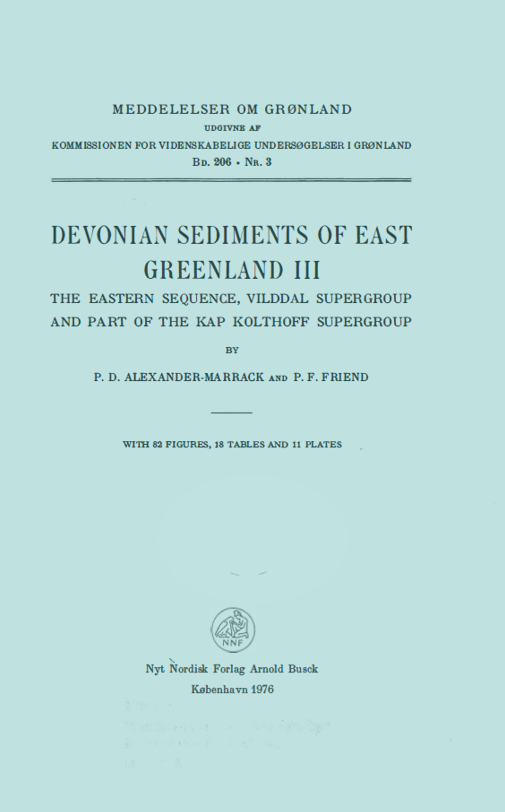Devonian Sediments of East Greenland III. The Eastern Sequence, Vilddal Supergroup and Part of the Kap Kolthoff Supergroup.
DOI:
https://doi.org/10.7146/mog.v206.143411Abstract
After the folding and metamorphism of the main Caledonian orogenic phases in East Greenland, the next event was the extrusion of the Kap Fletcher volcanics in Canning Land.
Vilddal Supergroup sedimentation then occured from Canning Land in the south, to Hudson Land in the north. Fluvial sandstones and conglomerates formed in eastern Gauss Halvø, and were then followed more widely, by a variety of fluvial and lacustrine sediments. Extensive lacustrine environments, of upper Middle Devonian age, accumulated up to 1500 m of sediment. Faulting and local folding about east-west axes, with deep erosion, terminated the Vilddal Supergroup sequence. Kap Kolthoff Supergroup sedimentation of dominantly fluvial and sandy type, lasted from upper Middle Devonian to upper Upper Devonian times. It records the appearance, for the first time, of an eastern source for the Devonian sediments.
This new feature extended from Canning Land in the south, to Hudson Land and Kap Franklin, in the north. The transition to this new crustal pattern is marked by the Kap Franklin volcanics and conglomerates, and by at least two phases of granite emplacement. A maximum of 21 1/2 km of Kap Kolthoff Supergroup sedimentation has been measured.
The uplift of fault-defined blocks then moved the eastern margin of the basin even further west in Kap Graah and Mount Celsius, Upper Devonian times.

Downloads
Published
How to Cite
Issue
Section
License
Coypyright by the authors and the Commision for Scientific Research in Greenland. No parts of the publications may be reproduced in any form without the written permission by the copyright owners.

